07 Mar The Ultimate Guide to Foam Rolling: The Benefits and Tips
If you have gone to a gym you have probably come across foam rollers. Have you ever wondered what they are used for, or why they come in different shapes and sizes? If you already own a foam roller, are you using it effectively? In this blog we outline what foam rolling is, what it is used for and give you the tips to get the best out of foam rolling.
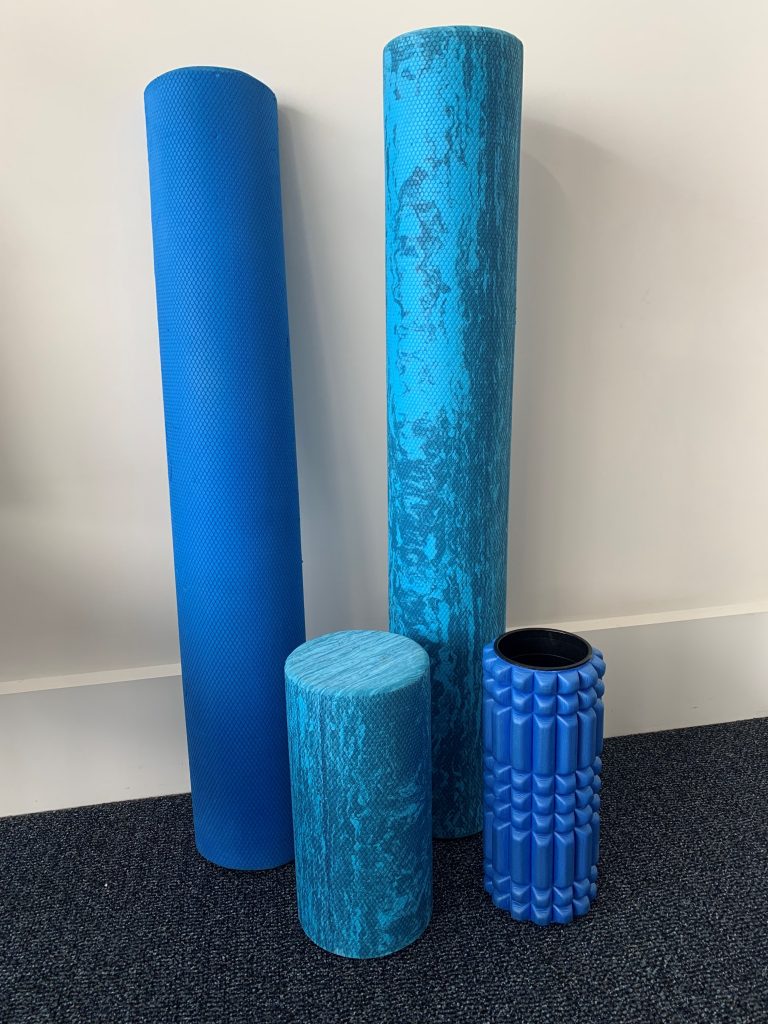
What is foam rolling and how does it work?
Foam rolling, also known as self-myofascial release, is a form of self-massage that involves using a foam roller to apply pressure to specific areas of the body. This technique has been commonly used by athletes and fitness enthusiasts, while it is often prescribed by therapists to many different clients to help reduce muscle soreness and tightness, improve mobility, and increase flexibility. In this blog, we will discuss the benefits of foam rolling and how to use a foam roller properly.
What is the benefits of foam rolling for your body?
Some of the benefits of using a foam roller include:
- Reduces muscle soreness and tightness: Foam rolling can help relieve muscle soreness and tightness (Fox et al. 2021) by breaking down adhesions and scar tissue that can form within the soft tissues. This can help improve blood flow to the area, which can reduce inflammation and aid healing.
- Increases flexibility: Foam rolling can help improve flexibility by increasing range of motion around a joint (MacDonald et al 2018, Kelly & Beardsley, 2018). This can help improve overall mobility, which can reduce the risk of injury and improve performance.
- Improves posture: Foam rolling can help improve posture by releasing tension in the muscles that surround the spine. This can help reduce the risk of back pain and improve overall spinal alignment.
- Enhances athletic performance: Foam rolling can help enhance athletic performance (Smith & Pridgeon, 2019) by improving muscle function and reducing the risk of injury. This can lead to improved strength, power, and endurance.
How can I use a foam roller safely and effectively?
Some of the key factors in choosing the type of foam roller and how you are going to use it include:
- Choose the right foam roller: It is important to choose a foam roller that is appropriate for your level of experience and fitness level. See below for more information on choosing the right roller for you.
- Roll slowly: When using a foam roller, it is important to roll slowly and focus on the areas that are most tight or sore. Use a gentle back-and-forth motion, applying pressure to the area for 20-30 seconds before moving on to the next area.
- Don’t roll over bones: Avoid rolling over bones or joints, as this can cause discomfort and may lead to pain. Instead, focus on rolling over the muscles that surround the joint.
- Breathe: When using a foam roller, it is important to breathe deeply and relax as much as possible. This can help reduce tension in the muscles and improve the effectiveness of the foam rolling session.
What are some foam rolling techniques for different parts of the body
While rolling can be done on almost any part of the body, there are certain techniques that are best suited for different areas.
- One common area that people foam roll is the back. To foam roll your back, lie on the roller with it positioned horizontally under your shoulder blades. Support your head with your hands, and slowly roll up and down the length of your spine. You can also shift your weight to one side to target the muscles on that side of the spine.
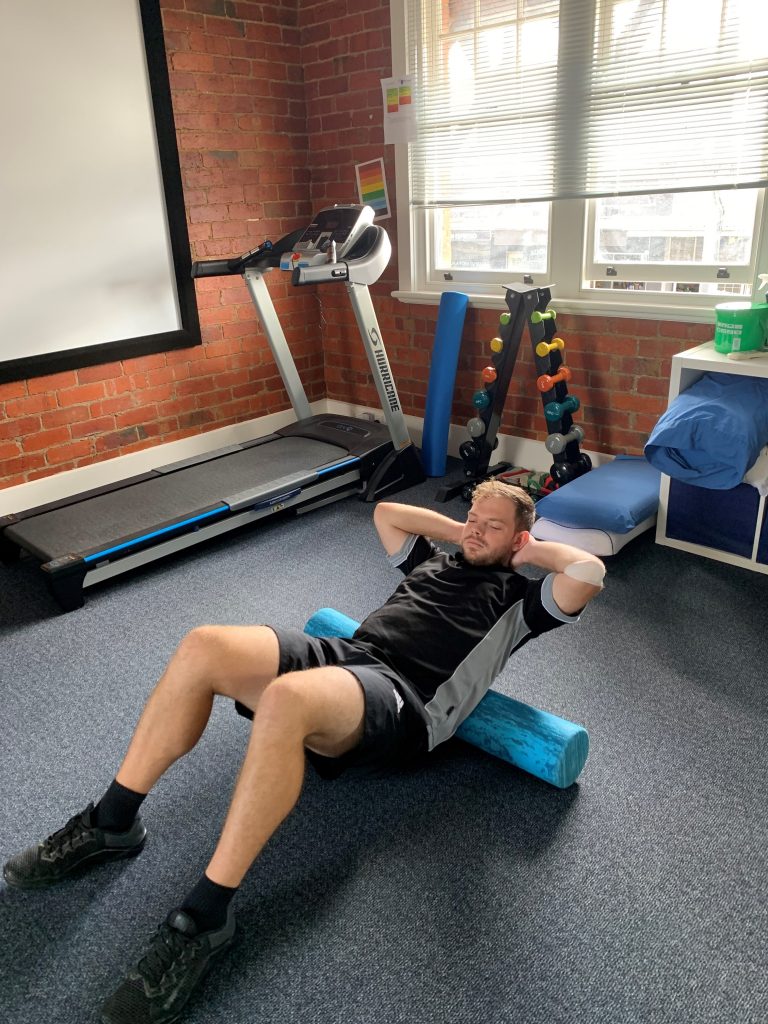
- Foam rolling can also be beneficial for the legs, especially the quads, hamstrings, and calves. To foam roll your quads, start by lying face down with the roller under your thighs. Use your arms to push yourself forward and backward, rolling the length of your quads. For your hamstrings, sit on the roller with it under your thighs, and roll back and forth. And for your calves, sit on the floor with your legs outstretched and the roller under your calves. Roll up and down the length of your calves, pausing on any areas of tension.

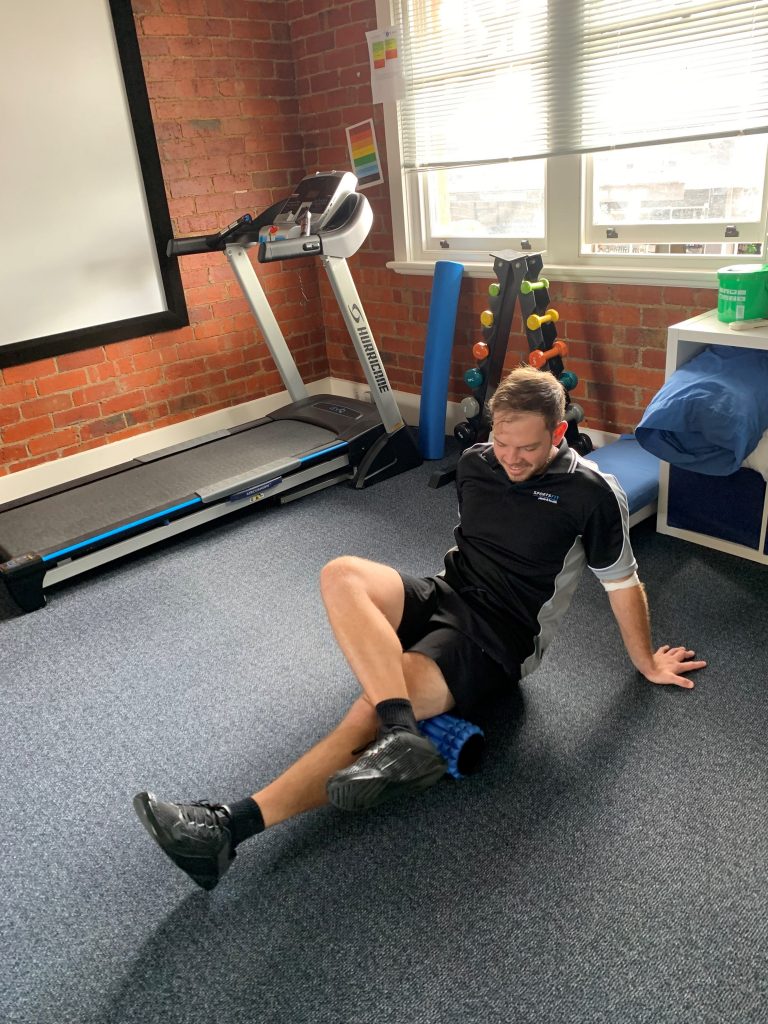

- Foam rolling can also be effective for the hips and glutes. To foam roll your hips, sit on the roller with it positioned under one hip. Cross the opposite ankle over the knee of the leg that’s on the roller, and roll back and forth. Repeat on the other side. To foam roll your glutes, sit on the roller with it positioned under one buttock. Cross the opposite ankle over the knee of the leg that’s on the roller, and roll back and forth. Repeat on the other side.
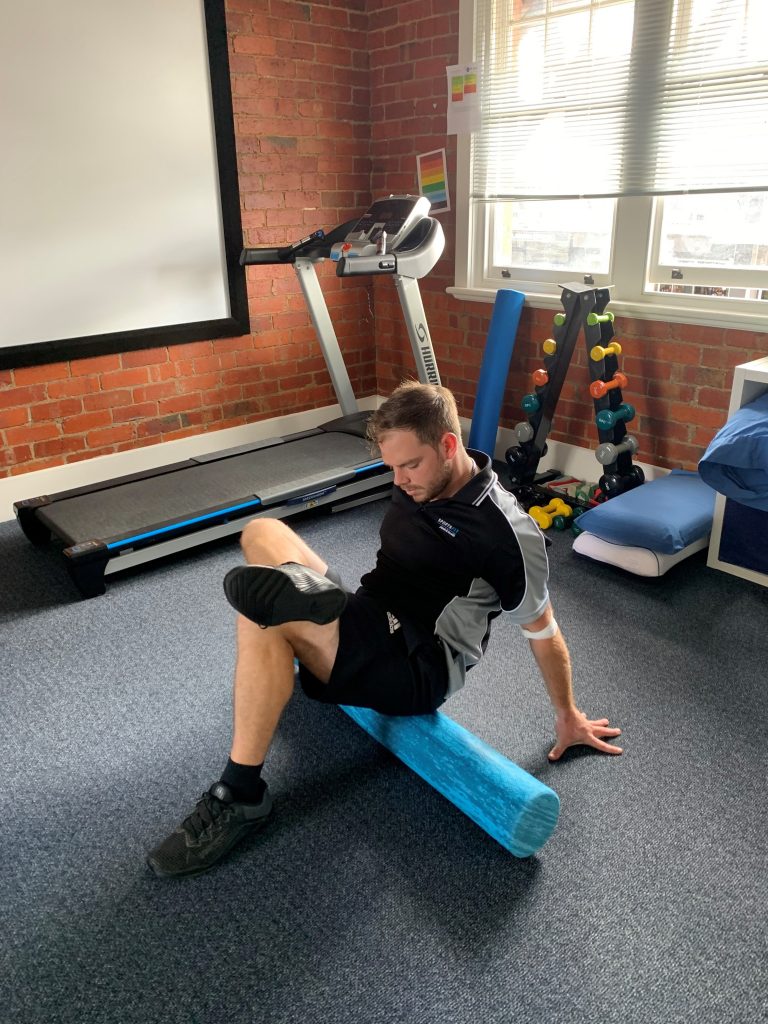
Tips for Choosing the Right Foam Roller for Your Needs
Choosing the right roller can be a crucial factor in ensuring that your routine is effective and safe. There are several factors to consider when selecting a roller that will meet your individual needs.
First and foremost, consider the density of the foam roller. Foam rollers come in different densities, ranging from soft to firm. Softer foam rollers are better suited for beginners or those with more sensitive muscles, while firmer rollers are ideal for those who want a deeper, more intense massage.
The size and shape of the foam roller should also be taken into consideration. Smaller, more compact rollers are best for targeting specific areas, such as the calves or shoulders, while larger rollers are better for rolling out larger muscle groups like the back or legs. Smaller rollers are more convenient for travelling with- particularly if you plan on using it at different locations.
Another factor to consider is the texture of the foam roller. Some foam rollers have a smooth surface, while others have textured bumps or ridges. Textured rollers can be more effective in breaking up muscle knots and adhesions, but may be too intense for some individuals.
Finally, consider the material of the foam roller. Foam rollers can be made of various materials such as foam, rubber, or plastic. Foam rollers made of higher-quality materials are typically more durable and longer-lasting.
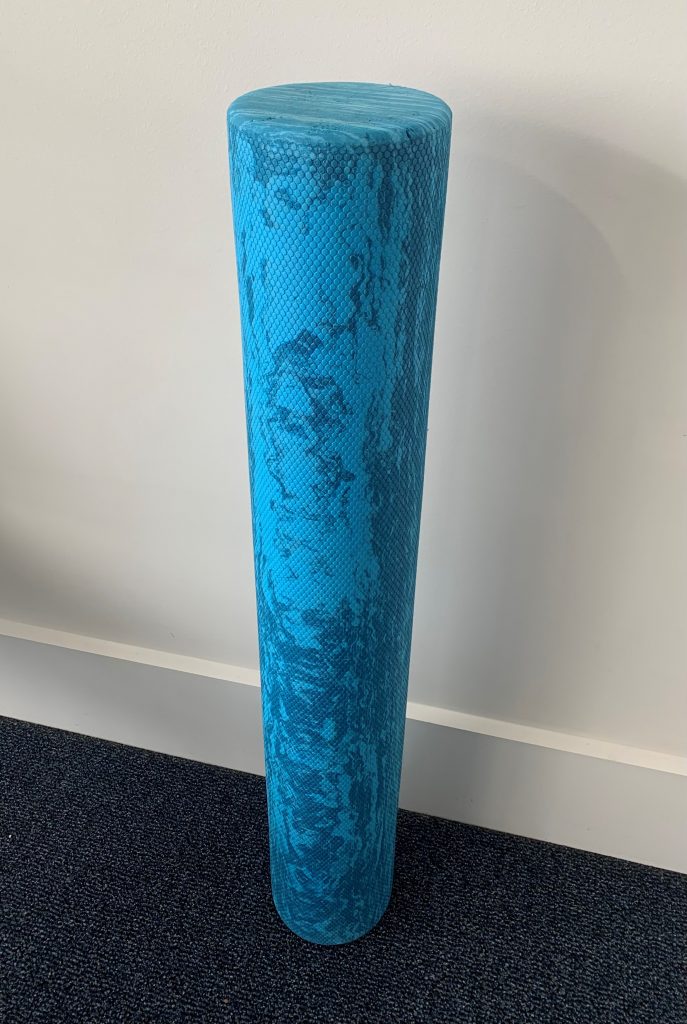

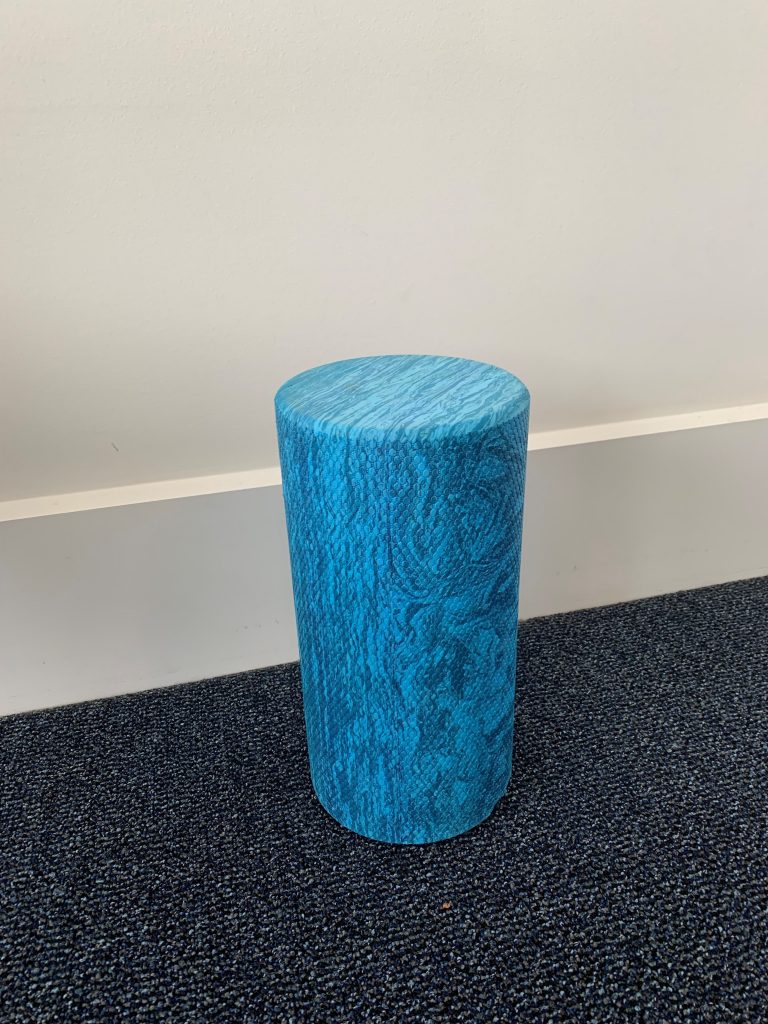

Remember, foam rolling should always be done with proper form and technique, and with a foam roller that is appropriate for your level of experience and physical needs.
If you need to purchase a foam roller then CONTACT US HERE, letting us know what roller you would like, or how you intend to use it.
Mo Bhatnagar
Myotherapist/Remedial Massage Therapist
Want you to learn about more ways to treat your soft tissues check out:
References:
- Fox, A. S., Bonacci, J., McLean, S., Spittle, M., & Saunders, N. (2021). The effect of foam rolling duration on range of motion and perceptions of pain and soreness in the hips and shoulders of healthy adults. Journal of Sports Science and Medicine, 20(2), 262-270.
- Smith, J. C., & Pridgeon, B. (2019). The effect of foam rolling on muscle soreness and vertical jump performance in collegiate basketball players. International Journal of Sports Physical Therapy, 14(1), 48-53.
- Kelly, M. K., & Beardsley, C. (2018). Specific and cross-over effects of foam rolling on ankle dorsiflexion range of motion. Journal of Bodywork and Movement Therapies, 22(4), 849-854.
- MacDonald, G. Z., Penney, M. D., Mullaley, M. E., Cuconato, A. L., Drake, C. D., Behm, D. G., & Button, D. C. (2018). An acute bout of self-myofascial release increases range of motion without a subsequent decrease in muscle activation or force. Journal of Strength and Conditioning Research, 32(2), 338-346.


